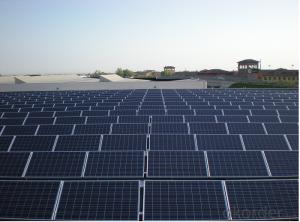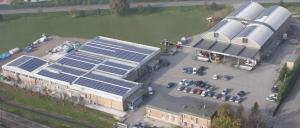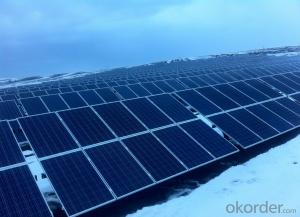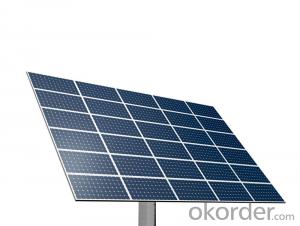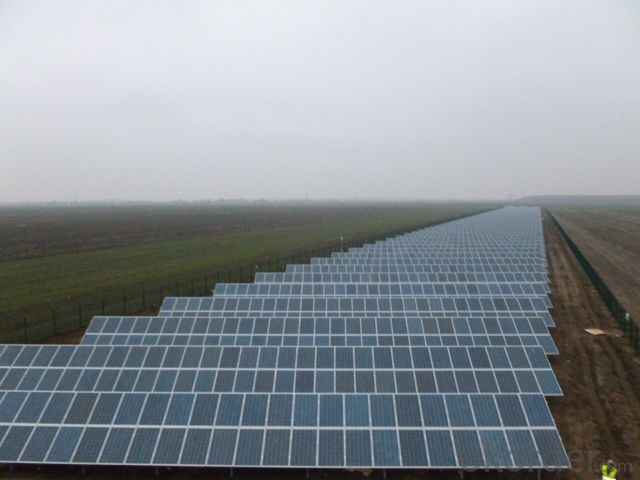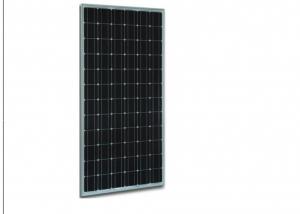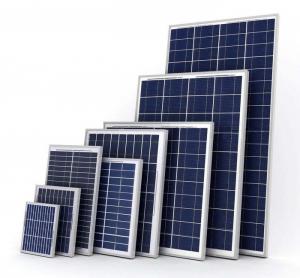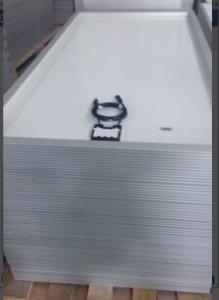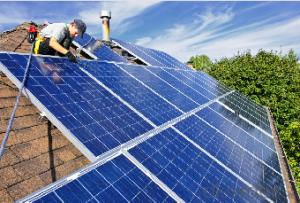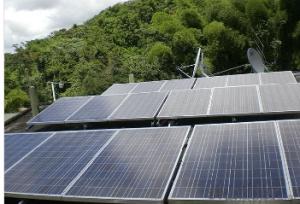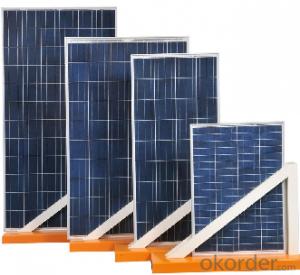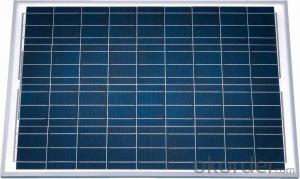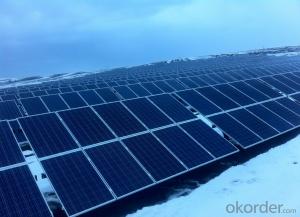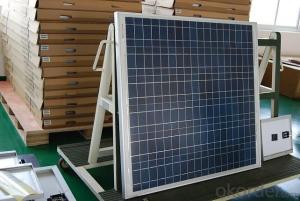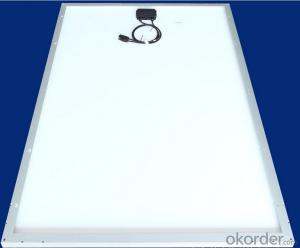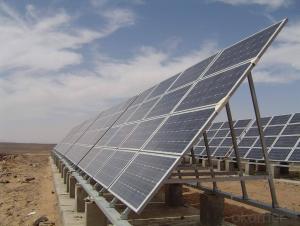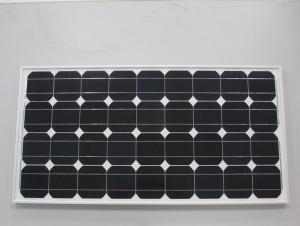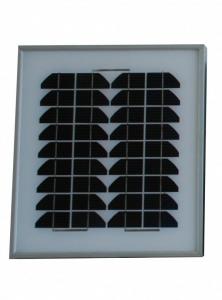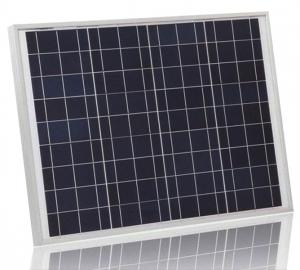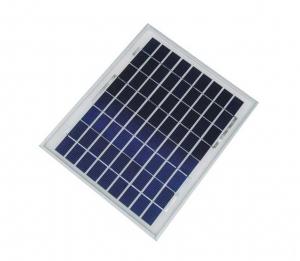Ice Solar Panels - CNBM Solar Monocrystalline 156mm Series 300W
- Loading Port:
- Shanghai
- Payment Terms:
- TT OR LC
- Min Order Qty:
- 1000 watt
- Supply Capability:
- 20000000 watt/month
OKorder Service Pledge
OKorder Financial Service
You Might Also Like
Specification
Materials
Silicon
Guarantee
12 yrs free from defects in materials and workmanship
No less than 90% within 10yrs and no less than 80% within 25yrs
TUV(IEC61215&IEC61730), CE, UL
Application
Photovoltaic/ solar/ green energy/ energy saving
Descriptions
1.High efficiency crystalline silicon solar cell. Even if under the weak light, the solar module can produce maximum power output.
2.Tempered glass (toughened glass): Anti-reflecting coating and high transmission rate glass increase the power output and mechanical strength of solar module.
3. EVA and TPT: Using high quality EVA and TPT to prevent destroying and water.
4. AI frame: Without screw, rner connection. 6 holes on the frame can be installed easily.
5. Junction box: Multi function junction box with water proof.
6. Long lifetime: ≥25 years; Less power decrease.
7. Good performance of preventing from atrocious weather such as wind and hails.
8. Resisting moisture and etching effectively, not effected by geology.
9. The certificate issued by international authority: UL, TUV, IEC, CE.
Packaging Details
26pcs/pallet, 28pallets/ 40HQ
Our solar panels are packed in cartons, and then pallet.
Shipping by sea or by air are both ok, it up to customer’s chose.
We’d like to inquiry the freight cost for customer after be informed exact quantity and destination address.
CNBM International Corporation is a professional solar panel manufacturer in China for CNBM brand . Silicon panel ( silicon module), as our main product, has high quality and good service. Our products are very popular in Europe, Australia, England, Middle East, Mexico, Argentina, Chili, Singapore and Africa.Furthermore, our products have gained international authorized certificates like TUV, UL and CE.
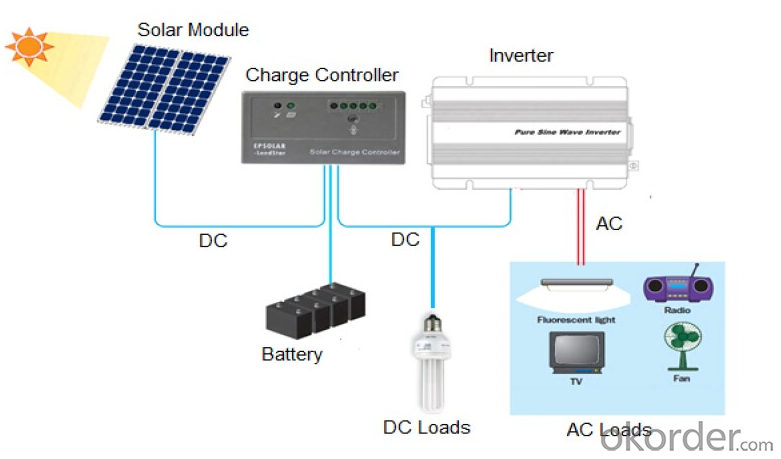
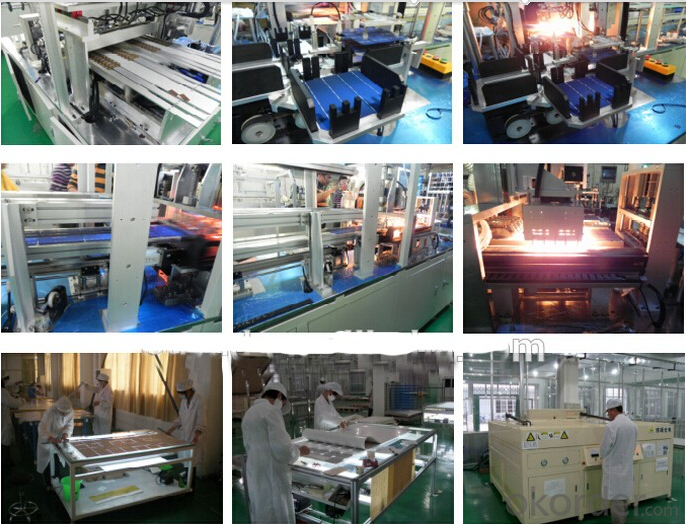

Why Choose Us
A. Professional Manufacturers , Strict quality control & power classification Silicon Solar PV Module
B. 100% A grade solar cell with Positive tolerance power range.
C. High Conversion Efficiency , High transmission rate , low iron tempered Anti-reflecting/coating film 3.2mm glass
D. Anti-aging & high visosity EVA
E. high frame resistant & Double-sided fluorine TPT
F. Anodized aluminum alloy high thickness frame
G. 3 or 6 bypass diodes , 90mm 4m2 cable , MC4 connectors & waterproof junction box
H. Long life, Easy installation, high wind & hail impact resistance
I. Be resistant to atmospheric exposure & effects of delamination
J. ISO9001:2008/ISO14001:2004/OHSAS18001:2007/ CE /TUV/CEC/ IEC/EN61215 IEC/EN61730/CHUBB INSURANCE
K. 10Years Manufacturing Quality Warranty , 10Years 90% Power output Warranty, 25Years 80% Power output Warranty
- Q: Can solar panels be used to power an entire home?
- Yes, solar panels can be used to power an entire home. With the right number of solar panels and a proper energy storage system, it is possible to generate enough electricity to meet the energy needs of a household. However, it is important to consider factors such as energy consumption, geographical location, and system size to determine if solar panels alone can entirely power a home.
- Q: Can solar panels be used in areas with high levels of chemical pollutants?
- Yes, solar panels can be used in areas with high levels of chemical pollutants. However, frequent maintenance and cleaning may be required to prevent the accumulation of pollutants on the panels, which could reduce their efficiency over time. Additionally, the presence of chemical pollutants in the air may have a negative impact on the overall performance and lifespan of the solar panels. Therefore, it is important to assess the specific conditions and potential risks before installing solar panels in such areas.
- Q: How much candle lights is required to operate a 205 watt solar panel?
- That's hard to tell. A solar panel produces somewhere between 7 and 0W per square foot under sunlight exposure. You should calculate the light intensity of sunlight, and then calculate the light intensity of a candle (You'll have to look that up in some physics book or the internet) and then just multiply the number of candles until you match the intensity of sunlight. Realistically, you would need so many candles that you wouldn't be able to fit them in front of the solar panels, assuming you don't end up with a huge fireball.
- Q: How much space do solar panels require?
- The amount of space required for solar panels can vary depending on factors such as the type and size of the panels, their efficiency, and the energy needs of the system. On average, an average-sized residential solar panel system typically requires around 100-400 square feet of roof space. However, ground-mounted systems can require larger areas, and more efficient panels can generate the same amount of electricity in a smaller space.
- Q: Can solar panels be used for powering outdoor recreational vehicles?
- Yes, solar panels can be used for powering outdoor recreational vehicles. They provide a renewable and sustainable source of energy that can charge the batteries of RVs, campers, and other outdoor vehicles. Solar panels can generate electricity during daylight hours, allowing for off-grid power supply and reducing the reliance on traditional fuel sources.
- Q: How do solar panels generate electricity?
- Solar panels generate electricity through the photovoltaic effect, where sunlight is converted into electricity. The panels consist of multiple solar cells made of semiconductor materials, typically silicon. When sunlight hits the cells, it excites the electrons, causing them to flow and generate an electric current. This current is then captured and used to power various devices or stored in batteries for later use.
- Q: I don't remember what number exactly but it's in the single digits. This number represents how efficient solar panels are at capturing the sun's rays and converting it into electricity.Why?
- first okorder /
- Q: Can solar panels be installed on community centers or libraries?
- Yes, solar panels can be installed on community centers or libraries. In fact, community centers and libraries are often ideal locations for solar panel installation due to their large roof spaces and potential for generating significant amounts of clean energy. Additionally, solar panels on these public buildings can serve as a visible example of renewable energy adoption and can help reduce electricity costs while promoting sustainability within the community.
- Q: how to market solar energy products?
- You'd better build some sample project. For e.g, if you mean solar water heater, install one pc on your roof, and make it generate hot water, and tell people about it.
- Q: I am doing a school project and we need to find the cost of solar panels for our school. The problem is i don't know what size the system needs to be. Is it 000 watts or 000000 watts?Also can you find the cost of the system?Thanks
- My okorder .
Send your message to us
Ice Solar Panels - CNBM Solar Monocrystalline 156mm Series 300W
- Loading Port:
- Shanghai
- Payment Terms:
- TT OR LC
- Min Order Qty:
- 1000 watt
- Supply Capability:
- 20000000 watt/month
OKorder Service Pledge
OKorder Financial Service
Similar products
Hot products
Hot Searches
